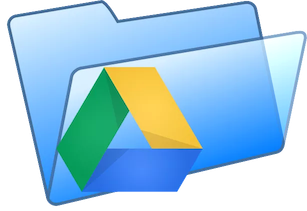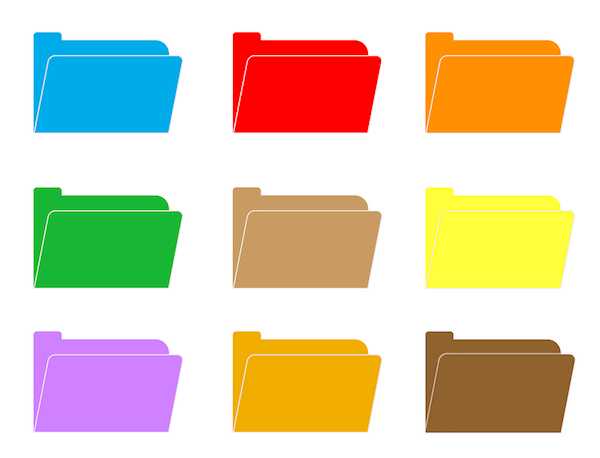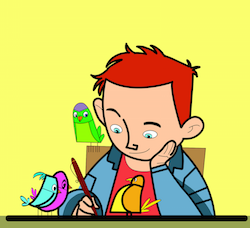Growing Writing Skills with Digital Portfolios

Over the course of the last five years there have been many discussions among my ELA department colleagues and our administrators about how to effectively measure student growth in writing. I’ve been an advocate for digital writing portfolios, which I have used successfully.
The “Conversation” is ongoing, but most of my colleagues have yet to be convinced that writing portfolios are the best solution. This year there is only one other teacher besides myself who uses portfolios, and she is in the high school. As middle school department co-chair, I would love to see us use this practice schoolwide.
Simply put, portfolios create a system whereby students can keep various kinds of writing artifacts over the course of the year (and even across their school career). Furthermore, the portfolios can be passed from teacher to teacher, allowing future teachers to take a measure of a student’s writing skills as they begin the new grade.
Our high school teacher leaves it up to her students to take their portfolios with them to the next grade. For me, whether the next teacher uses them or not, I simply share the students’ folders with the teacher who teaches 8th grade. (Because I teach 6th and 7th grade, I don’t have to share the 6th graders’ portfolios.)
Personally, I think keeping writing portfolios can be very beneficial and that using digital tools to create and maintain the portfolios can be helpful for both teachers and students. Here are my reasons why:
(1) Students should know that their writing is always a work in progress (I am always honest and tell my students that writing is hard but rewarding).
(2) By using a digital platform, students have access to their work throughout their whole writing career and are less likely to lose writing.
(3) Portfolios give students choice on what writings they want to include, showing their strengths.
(4) Digital platforms allow students to include work such as digital stories, public service announcements, book trailers, word clouds, and other digital writing content that might include interactive elements.
There are three questions I ask myself each year as I prepare to implement our writing portfolio program:
- Which digital platform will best meet our needs?
- What writing artifacts should students include?
- What’s the right starting point for students and for me?
Choosing a Digital Platform
Today, educators have many platform options for creating digital portfolios. For the last two years my students have been using Google Drive. I feel this is a good choice for upper grades (6-8). Students have access to all the tools: documents, slides, forms, and sites. Teaching in a Google school made the choice fairly easy for me.

The assignments students do can be easily managed using Google Classroom. Throughout the year I have students create sub-folders. Those sub-folders provide a home for all their work — informational, argument, narrative, student choice, creative writing, digital artifacts, and miscellaneous. At the end of our year together, it’s simple to have students share portfolio access with next’s year teacher.
This year, I have been trying something new where I allow students to use Google Sites. I decided to give students this option after attending a conference session last spring. Granting students this opportunity gives them a chance to design a website, which may be a future employment opportunity for some students. Besides displaying digital writing skills, creating a website encourages students to reveal who they are as individuals, and they can still attach folders and documents to the site.
I particularly enjoy the idea that they can attach their digital stories and book trailers on the site they create. Over the course of the year, students who choose to create a Google Site will continue to make changes to their site. They will add writing artifacts, and they may even redesign their site as they mature as writers and creators/consumers of digital content.
Google isn’t the only option that teachers can use for writing portfolios. Weebly is another free platform where students can create their own site and attach videos, documents, slideshows, etc. I feel Weebly would be a better fit for high school students because of its complexity. Weebly also has a blogging spot where students can write and potentially use the space as a kind of digital writer’s notebook. The sites that students can create with Weebly would have to be shared with the teacher to be able to view and assess the writing that students completed.
Other Platform Options: Other potential blogging platforms that could be used for writing portfolios are WordPress and Blogger which could be used for upper elementary through high school. For younger grades (2-4) SeeSaw is another great option. As with any other digital tool being implemented in the classroom, an educator should choose the portfolio environment that best fits the needs of their students. (When implementing a digital version of writing portfolios, always consult with your technology director to make sure the platform you’re thinking of choosing is supported at your school.)
Selecting Writing Artifacts
For me, deciding on a platform for my students to display their writing was the easy part. Deciding what artifacts my students should include in their portfolios has been a more challenging task.
Since first implementing writing portfolios, I have made changes to what students are asked to include in their compilation of work. Earlier, I mentioned the different sub-folders for student work. Because my district follows the Common Core Standards, students include relevant information, argument, and narrative pieces.
I require my students to choose the piece they want in their portfolio for each of the sub-folders (we complete multiple pieces under each type of writing). I also ask them to include one piece of poetry, their formal email, two writer’s notebook entries, and the “about me” writing they do at the beginning of the year (I discuss this assignment below).
When it comes to interactive digital pieces, I have the students include their book trailer, their digital story, and their choice of a book reflection they completed on Flipgrid. Furthermore, they have to include a comic strip they created using Toondoo and Pixton. (These tools are used to create an alternate ending to stories such as Lois Lowry’s The Giver.)
One of the last portfolio items I have them select is their favorite choice from among the vocabulary videos they have created throughout the year. You can read more about the vocabulary videos in my co-authored book From Texting to Teaching: Grammar Instruction in a Digital Age. (I may write about it here soon!)
In tandem with the classroom writing assignments students place in their portfolios, I have them include a reflection piece about each of these exemplars. I don’t want my students just looking at the grade they earned and then forget about it. By having them reflect on what they did and didn’t do well, they have an opportunity to grow even more as writers.
Here are some questions I ask my students to respond to in their writing reflections:
- What did you do well in this piece of writing?
- Where did you see a need for improvement?
- What was the most difficult part of this writing? The easiest?
- What are some steps you can take to improve on your next piece of writing?
The idea behind writing portfolios is for students to archive the work they do throughout the year, creating an easily accessible sample of their progress. It may sound as if there are a lot of pieces going into their portfolio; however, it is done over the course of a whole academic year, and by having multiple pieces to review, I gain insight into how each student has grown over the year in different genres of writing.
Starting and Ending the Year
Though many pieces will go into student portfolios during our year together, I often check in with myself about the best place to start.
In other words, what would be a quality beginning writing piece to kick off the year – one that gives me a good indication of where their writing skills are as we set out. I think this first writing assignment should be left up to the individual teacher. I know lots of ELA teachers start by having students write a letter introducing themselves.
Over the past two years I have taken a different route. Rather then having my students simply write a letter, I have them do an introductory piece of writing called “About Me” and give them guidelines and questions to answer.
My goal is to be sure that I gather basic information about key writing skills of my students. Skills such as:
- Sentence structure
- Capital letters
- Punctuation
- Vocabulary
At the end of the year, I have my students write something similar to their “About Me” paper, but with more focused questions related to writing. Below are the questions I ask in their final writing piece for the year.
How would you describe your writing experience as a 7th grader?
- What are your best examples of your written work? Why?
- What are your best examples of your digital work? Why?
- How has your approach to revision and editing changed this year?
- What advice do you have for future 7th graders?
- What writing skills will you take with you to 8th grade that you didn’t bring to 7th grade?
Through their writing portfolio and their final writing piece, I am looking for growth in grammar and mechanics. I am also looking for evidence that students are finding their own voice in their writing.
Furthermore, I want my students to grow their skills in informational, argument, and narrative writing. For example, I want them to be able to use citations effectively, support their claims with evidence, and be able to distinguish the difference between different points of view.
Rubrics Aren’t Substitutes for Portfolios
When considering all of the areas to consider in students’ writing, it would seem easy to develop a rubric for students to follow. I am not an advocate for rubrics because I feel students will only work hard enough to get to that top number in a rubric. The descriptions in the rubric become limitations.
Instead, I use guidelines and guiding questions in my classroom similar to the “About Me” one I shared earlier in this post. Using guidelines gives the students the freedom to express themselves as writers. It doesn’t restrict them to having a certain number of paragraphs or pages, or stifle their urge to expand their thinking and creativity.
I admit that my guidelines for writing portfolios are a work in progress, and the subject of rubrics vs. guidelines might be a good topic for another post. It’s certainly a worthwhile conversation for English departments and administrators.
Meanwhile, I continue to believe that writing portfolios are a more authentic writing assessment for students. They allow us as educators to get a deep look into our students’ writing lives and, when we reach year’s end, they provide us with a much clearer picture of how they have grown.
Digital Portfolio Resources
- Electronic Portfolios
- Digital Writing Portfolios for Writing Instruction
- “Digital Writing Portfolios” (Two Writing Teachers)
- “Digital Student Portfolios Show What Kids Can Do” (Matt Renwick at MiddleWeb)
Do you use digital writing portfolios in your teaching? What have you learned? Please share in the comments.
































